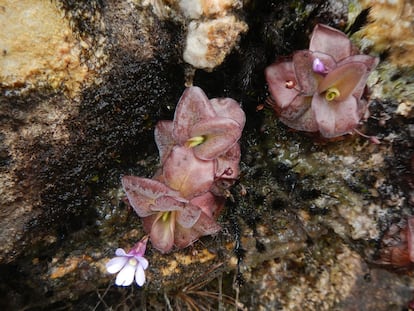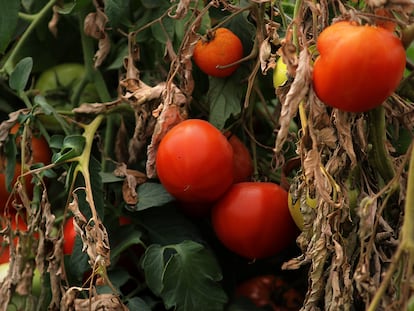Be careful when using plant identifying apps, as they can be quite imprecise
A study revealed that some popular platforms for naming trees and flowers can have accuracy as low as 4%; even the best ones need improvement

Making up more than 80% of the planet’s biomass, plants are part of a diversity that is largely unknown to us. The scientific community has identified some 400,000 species — how many of them do you know? Most people, at some point, have wondered what tree, shrub or flower is the one in front of them; this is why the applications that use artificial intelligence to identify them have gained popularity, bringing the general public closer to nature and the world of botany. However, most are not accurate. While the ones that work best tend to have very technical terminologies, the most popular ones fail frequently.
A study published in the journal Plos One shows that some of the most famous apps for identifying plants can have accuracy as low as 4%. The researchers used Google Lens, iNaturalist, Leaf Snap, PlantNet, Plant Snap and Seek, with the aim of identifying 38 species of herbaceous plants in their natural habitats in Ireland. What they found was that most of them yielded unreliable results; even the best one did not exceed 88% accuracy.
Overall, the apps identify flowers better than leaves, thanks to their variety of colors and shapes. Still, iNaturalist, for example, which has a global database and the collaboration of the National Geographic Society, was only correct with 3.6% of the flowers in the study. Plants Snap accurately identified 35.7% of the flowers and 17.1% of the leaves. The one that scored best was Plant Net, with 88.2% success with flowers. Despite this, it failed to correctly identify 12% to 20% of the plants, which brings attention to the fact that even the apps that work well need improvement.
Julie Peacock, associate professor of ecology at the University of Leeds (U.K.) and one of the authors of the study, stresses that the location of the flora can influence the results, as some are better known than others: when apps use machine learning and collect information, she explained, the results are likely to be better in the geographic area where the app is most frequently used. Another problem that the study found is that more assertive apps may be unsuitable for some users due to the wide range of botanical information and terminology they use, which the general public is often unfamiliar with.
The identification methodology also affects the results. Everything counts: the scoring system they use, how the app compares the submitted images and the quality of those photos. “In citizen science,” said Peacock, “there is always a risk that the public will introduce errors into the data. However, it is a great way to obtain lots of information. Apps with plant photos verified by expert botanists may have fewer errors, but generating such a large data set would be very difficult.”
Despite all this, the researchers argued that these applications have enormous potential to bring the public closer to the great universe of plants and nature, and people should continue to use them, albeit keeping in mind that the most important thing is “not just to accept the suggestions, but to look it up and see what is the most likely correct answer,” Peacock pointed out — especially if the plant in question could be toxic or harmful in some way.
Regarding the risks of having an erroneous reading, there could be a situation in which a person comes across a supposed edible herb and decides to try it, only for it to turn out to be poisonous; or a plant could be identified as invasive, when in fact it is an endangered species. This is why it is essential to double check before touching, pulling or eating them. “I encourage people to use them to learn more about the local vegetation,” continued Peacock.
Of the almost 400,000 species of plants known to science, some are morphologically very similar, or have characteristics that are hard to recognize in a photo, such as the presence of fuzz. “The applications will obviously improve, but I doubt that they will ever be perfect, just like even the best botanists make mistakes and know certain floras better than others,” said the expert from the University of Leeds.
As for the mistakes they make when it comes to identifying a species, Felipe Castilla, a botanical biologist at the Royal Botanical Garden of Madrid and one of the creators of Arbolapp, an app that identifies trees in Spain, agrees that achieving perfection is impossible, even with the aid of botanical experts. For instance, there could be cases in which a plant can belong to one family or another, depending on its characteristics; also, species evolve. “Nothing is absolute. Much less in nature,” concluded the biologist.
Sign up for our weekly newsletter to get more English-language news coverage from EL PAÍS USA Edition
Tu suscripción se está usando en otro dispositivo
¿Quieres añadir otro usuario a tu suscripción?
Si continúas leyendo en este dispositivo, no se podrá leer en el otro.
FlechaTu suscripción se está usando en otro dispositivo y solo puedes acceder a EL PAÍS desde un dispositivo a la vez.
Si quieres compartir tu cuenta, cambia tu suscripción a la modalidad Premium, así podrás añadir otro usuario. Cada uno accederá con su propia cuenta de email, lo que os permitirá personalizar vuestra experiencia en EL PAÍS.
¿Tienes una suscripción de empresa? Accede aquí para contratar más cuentas.
En el caso de no saber quién está usando tu cuenta, te recomendamos cambiar tu contraseña aquí.
Si decides continuar compartiendo tu cuenta, este mensaje se mostrará en tu dispositivo y en el de la otra persona que está usando tu cuenta de forma indefinida, afectando a tu experiencia de lectura. Puedes consultar aquí los términos y condiciones de la suscripción digital.
More information
Últimas noticias
EU’s prestige at stake with proposal to fund Ukrainian war effort with Russian assets
Mustafa Suleyman: ‘Controlling AI is the challenge of our time’
Venezuela breaks energy agreements with Trinidad and Tobago due to alleged complicity with the US
The murder of Michele and Rob Reiner: A tale of horrific days in Hollywood
Most viewed
- ‘El Limones’ and the growing union disguise of Mexican organized crime
- Christian Louboutin: ‘Young people don’t want to be like their parents. And if their parents wear sneakers, they’re going to look for something else’
- ‘We are dying’: Cuba sinks into a health crisis amid medicine shortages and misdiagnosis
- A mountaineer, accused of manslaughter for the death of his partner during a climb: He silenced his phone and refused a helicopter rescue
- The low-cost creative revolution: How technology is making art accessible to everyone











































